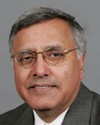Mr. Chairman, thank you very much. I will make a presentation, and Colonel MacDonald will assist me in responding to questions at the end of the presentations.
Mr. Chairman, the Conference of Defence Associations is grateful for this opportunity to comment on Canada's military commitment to Afghanistan.
This presentation of the CDA will deal with five topics: criteria for assisting the ISAF, the international force mission's effectiveness, a paper on which is included in the background information we have provided your committee; the ISAF concept of operations; a word or two on an assessment of the success of ISAF operations to date; comments on the relationship between the Canadian mission's combat operations and efforts in reconstruction; and to conclude, a comment on the state of personnel and equipment of the Canadian Forces in Afghanistan.
Mr. Chairman, ladies and gentlemen, the CDA believes that the ISAF mission, and Canada's considerable part in it, is an honourable undertaking being conducted with the utmost professionalism by the Canadian Forces, and that it will be considered to have been effective and successful if and when the campaign of terror being waged by the Taliban and their extremist allies fails; if security is restored to the point that ordinary Afghans enjoy personal liberty and freedom from fear; if the Afghan army and police become effective in ensuring security; if the country's market economy begins to flourish; if the central Afghan government control spreads throughout the country; if human rights are respected; if significant infrastructure development programs are under way; and if the elements of a made-in-Afghanistan democratic system of government spread to all parts of the country.
It is obvious that achieving the foregoing objectives is a phenomenally complex and difficult undertaking. Nevertheless, the CDA believes the absence of any one of the above criteria would put the successful completion of the ISAF mission in doubt.
The mission of the NATO-led ISAF is to conduct military operations in order to assist the Government of Afghanistan and the international community in establishing and maintaining, with the full engagement of the Afghan National Security Forces, a safe and secure environment that will allow the government to extend its authority and influence, hold free and fair elections and thereby facilitate Afghanistan's reconstruction.
From its inception, the ISAF's mission has consisted of five phases. Phase 1 is the assessment and preparation phase, including operations in Kabul, which are now completed. Phase 2 involves geographic expansion. It should be noted that in October 2003, the UN Security Council authorized the expansion of the NATO mission beyond Kabul. In October 2004, NATO deployed forces to the North and in September 2005, to the West. It also bears mentioning that expansion to the South was completed on July 31, 2006, that is a scant six weeks ago. Phase 3 of operations, the stage in which Canadian Forces are presently engaged, is a stabilization phase. Phases 4 and 5 will be ones of transition and redeployment.
Canadian Forces were recently deployed in Kandahar province with the launching of phase 3, the stabilization phase. However, the ISAF has been engaged in the North and West much longer than in Kandahar province, and in these districts, a relatively high level of stability has been achieved, which gives us reason for a certain amount of optimism.
The September 12, 2006, executive summary of the Afghanistan opium survey, published on an annual basis by the United Nations Office on Drugs and Crime, is the most authoritative source in the world on the opium and heroin trade in Afghanistan and is an excellent independent and empirically verifiable source from which the progress and success of the ISAF operation can be measured. It is also a source of robust indicators of changes in opium production and of the level of security, both of which are themselves useful indicators of the degree of success, on a regional basis, of the ISAF stability operations. The report indicates that most of the provinces and districts of the north and west are identified as low risk in security terms, whereas the south, where ISAF has been in place for only six weeks, has a much higher proportion of provinces and districts assessed as high or extreme risk.
Another measure found in the UNODC report is the change from 2005 to 2006 in the total area under poppy cultivation. While the geographical boundaries of the various regions used in the report do not exactly parallel the ISAF regional boundaries, they are close enough to allow for meaningful inferences to be drawn. We find that the area under cultivation in the north declined by 20% on a year-over-year basis, whereas the area under cultivation in the south shot up an alarming 121%, though interestingly the area under cultivation in Kandahar province, the province which is the responsibility of the Canadians, declined by 3%.
From these two indicators identified in the recent UN report on opium poppy cultivation in Afghanistan, namely the area under cultivation and the level of security in each province, we conclude that ISAF operations in the North and West have been moderately successful. We believe it is reasonable to expect similar results in the South.
A critical problem for the Afghan government is the huge disparity between governmental sources of income and those available to the drug traffickers.
The UNODC Summary Findings of Opium Trends in Afghanistan, 2005 reports that the total export value of opium to neighbouring countries amounted to $2.7 billion. Of that sum, the farmers received $560 million, whereas the drug traffickers retained $2.14 billion, or about 80% of the total export value. Since Afghanistan's GDP for that year was reported to be $5.2 billion, opium exports stood at about 52% of GDP.
Set against that is the Afghan government's revenue base. The Asian Development Bank's key indicators of developing Asian and Pacific countries for 2004 shows the total revenue of the Afghan government in that year as $652 million, or about 5.2% of GDP.
In 2005, opium production in the southern region amounted to 43% of total Afghan production and will have provided drug traffickers in the south with an annual income of about $900 million. In 2006, the UNODC reports that the south will account for 61% of total production. If export prices remain similar, this would put approximately $1.9 billion in the hands of the drug traffickers.
It is, we believe, self-evident that the great disparity in financial resources between the drug traffickers and the Afghan national government would somehow ensure the complete overthrow of Afghan's national government forces in the south.
If the ISAF were to withdraw, the country would quickly pitch back into civil war, which at best would lead to a decline in regional warlord control, and at worst would see the coming to power of a neo-Taliban structure financed by the drug traffickers. Afghan would evolve from an narco-economy to a narco-state. To those who recommend that we cut and run, understand that they are favouring the return of a terrorist Taliban-al-Qaeda regime over the admittedly difficult birth of a fledgling democracy.
Reconstruction in Afghanistan is simply not possible unless a relatively secure and peaceful environment exists in which Canadian aid and development agencies, other NATO nations and numerous other countries around the world can set about to rebuild or build anew the infrastructure needed for a market economy to flourish. Given that from the beginning of Canada's involvement, the nature of military operations against the Taliban and their allies has constantly evolved, and Canadian Forces have of necessity modified their methods of operation and their inventory of military equipment, the CDA recognizes and acknowledges the professionalism of Canada's troops and their commanders. Canada's military has been able to accomplish its mission, a sine qua non of future reconstruction in Afghanistan.
It must be remembered, however, that the state of the Canadian Forces in Afghanistan and their capacity to accomplish their assigned mission within ISAF needs to be viewed within the larger context of their ability to help meet and fulfill Canada's other international obligations, as well as its domestic and continental North American obligations.
This is why the CDA continues to encourage all decision-makers to accept that we are today living in an insecure world in which defence and security preparedness, aimed at providing citizens with a safe and secure environment, is the single most important responsibility of government.
It therefore is essential that the government continue to meet its obligation to the men and women of our Canadian Forces by providing them with the necessary levels of trained personnel and the appropriate equipment they require to pursue and successfully accomplish the missions assigned to them.
The CDA therefore views the recently announced addition to the CF ISAF mission of a tank squadron, an infantry company, combat engineers, and other elements as a prudent and commendable response to the needs of the mission as articulated by the commander responsible for the operations, who constantly assesses the evolving situation in his area.
Such decisions will provide a significant improvement to Canada's ability to meet its current mandate in Afghanistan.
In the same vein or for similar reasons, the CDA also applauds the stated intention of the Government of Canada to take significant steps to deal with the recapitalization of Canadian Forces' strategic and tactical lift capabilities.
In conclusion, Mr. Chairman, thank you for your attention. Retired Colonel Brian MacDonald, an analyst with the CDA, and I will both be happy to answer your questions.
Thank you, Mr. Chairman.










